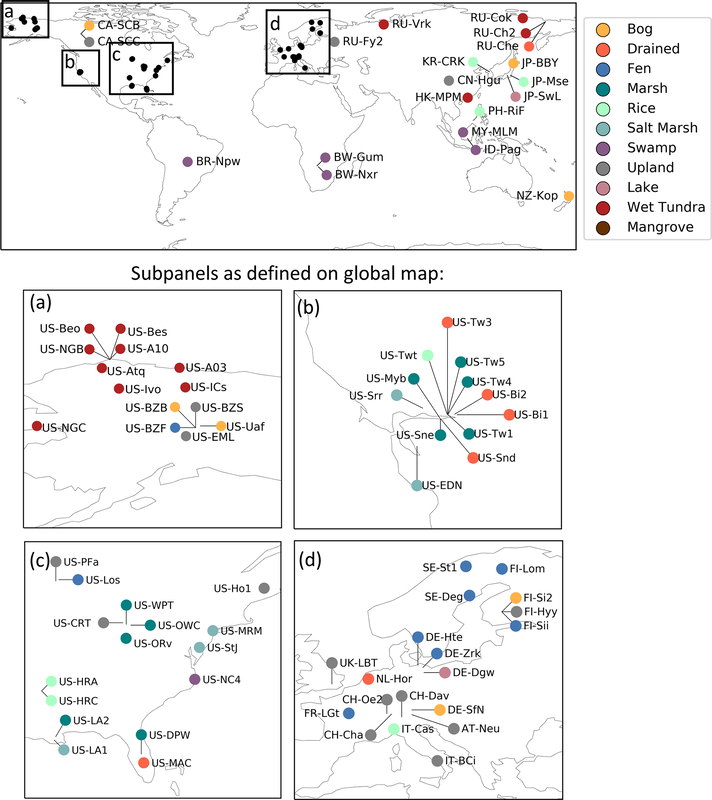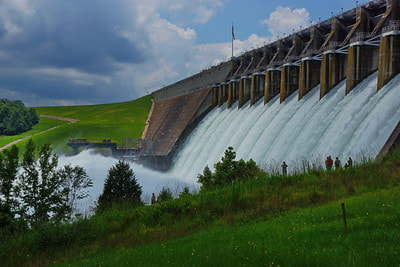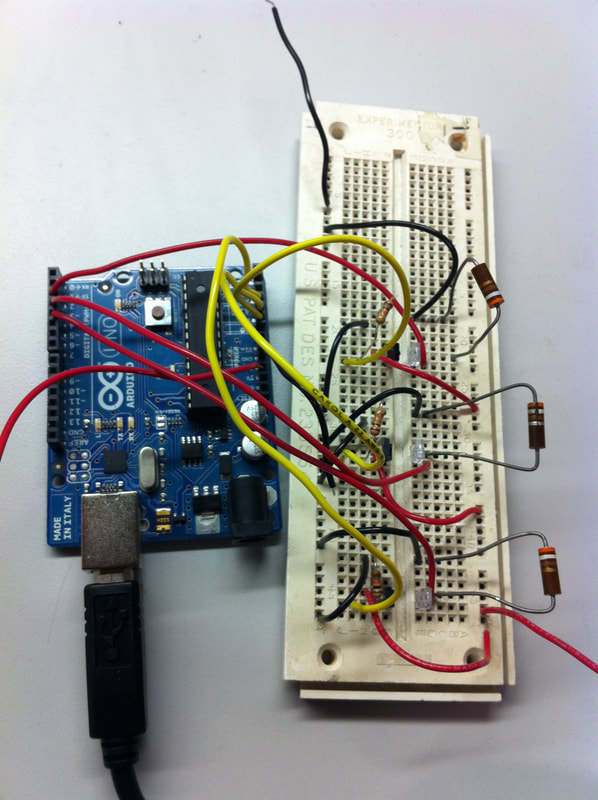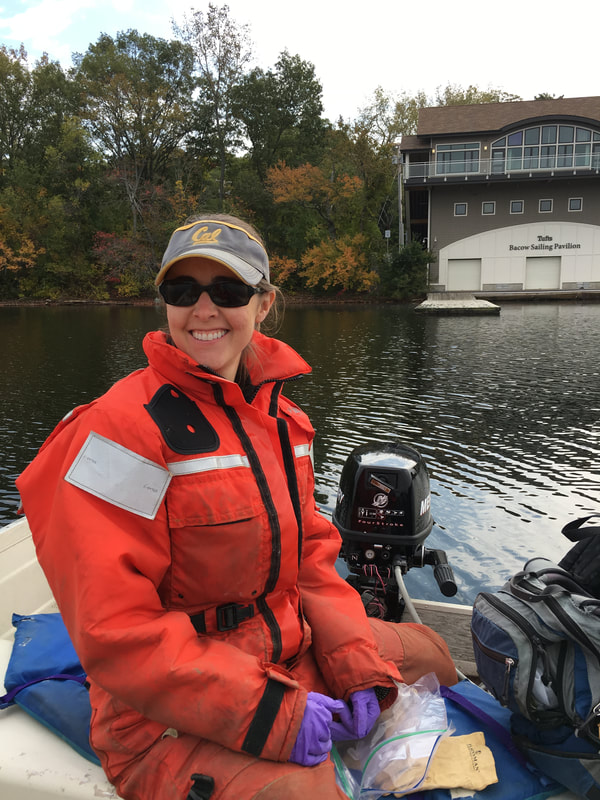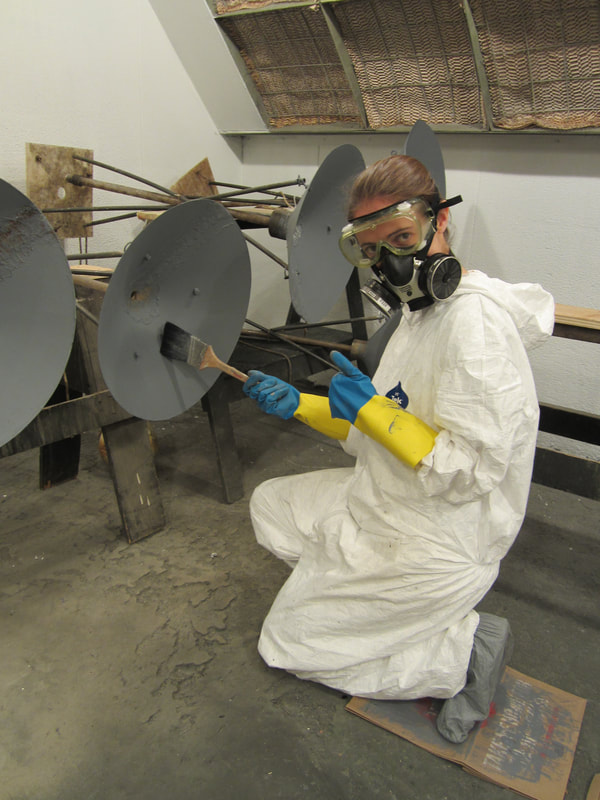Research
|
FLUXNET-CH4 and wetland methane release
During my recent postdoctoral work at Stanford I oversaw a large USGS Powell group studying methane emissions from wetlands. Our goal was to use eddy covariance data to better understand the controls and timing of wetland methane emissions, and to parameterize and benchmark the performance of land-surface models.
I worked extensively with AmeriFlux to create FLUXNET-CH4, the first global dataset of gap-filled methane fluxes from 81 sites and ~300 site years of data. My work analyzed the seasonal patterns of methane emissions from wetlands, including seasonality relationships to other important drivers such as temperature and gross primary productivity (Delwiche et al., 2021). |
Site locations for the FLUXNET-CH4 product (Delwiche et al., 2021).
|
|
Modeling hydropower methane emissions
Hydropower reservoirs can emit substantial quantities of methane, both from diffusion and ebullition at their surface, and downstream degassing. To predict the amount of emitted methane, I have built a process-based model of hydropower carbon cycling. The model includes estimations for carbon input, methanogenesis rates, internal oxidation, surface emissions, and downstream degassing. Being able to predict methane emissions, and understand the critical drivers of these emissions, will be a critical step towards reducing methane emissions in future reservoirs. This work was recently published: https://doi.org/10.1029/2022JG006908 |
|
Methane bubbling sensor
During my PhD work I was lucky enough to spend many summer days (and a few cold winter days) boating around Upper Mystic Lake in Massachusetts, studying methane bubbling. I designed, built, and deployed a fleet of new optical bubble detectors, which capture the volume and release timing of individual bubbles (see right panel). I studied how methane bubbles transport heavy metals and cyanobacteria from the sediment to the water surface in a 15m tall bubble column I built in the stairwell of our laboratory building (Delwiche et al., 2020). I have shared my sensors with groups working in China, Switzerland, and Peru, and continue to tinker with ideas for improved bubble sensors. |
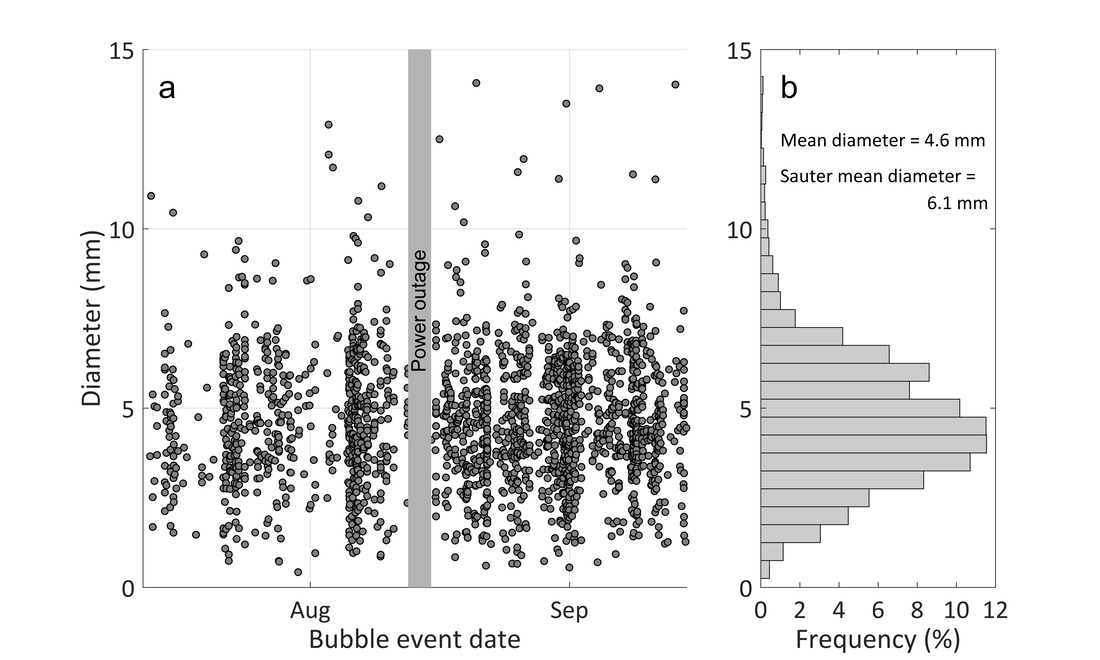
(a) Data from the bubble size sensor allow us to estimate the diameter and release timing of individual bubbles, and (b) the distribution of bubble sizes at each sampling location (Delwiche et al., 2017).
|

